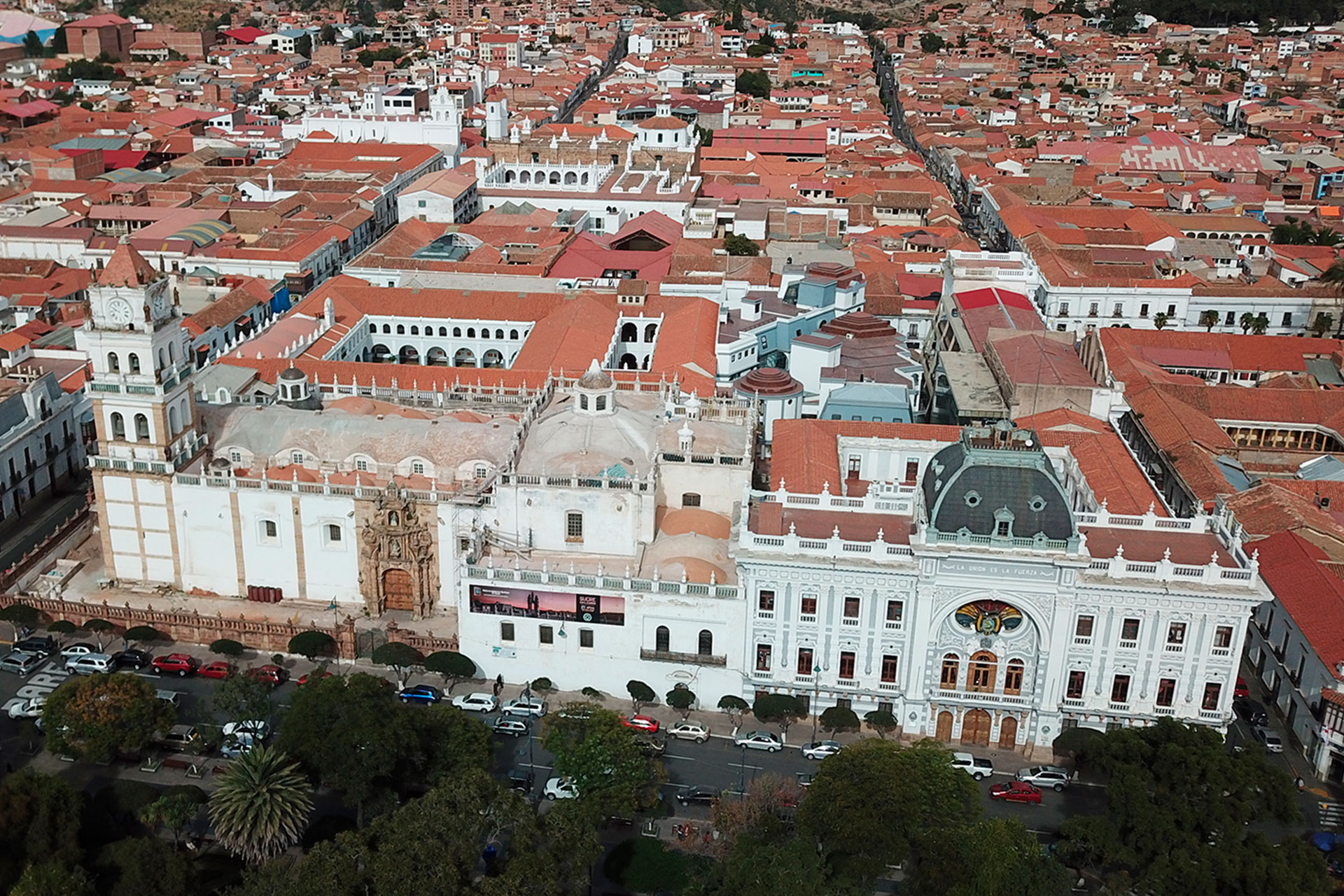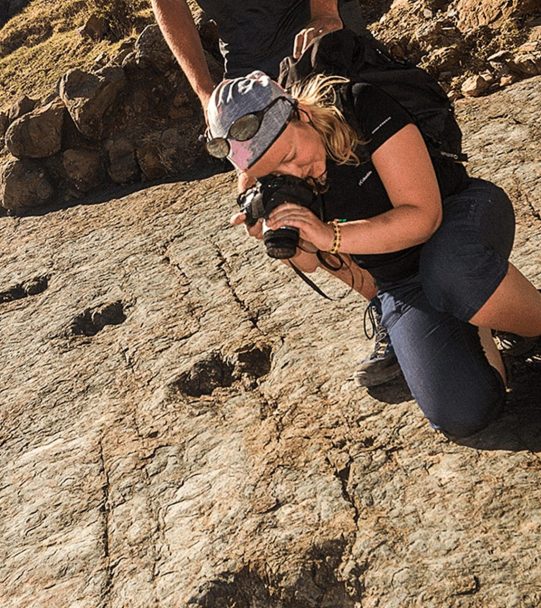Chuquisaca
Discover Chuquisaca, cradle of Bolivian independence and guardian of a unique history. Its capital, Sucre, founded on an ancient indigenous settlement and originally known as “La Plata”, is today a World Heritage Site, with impeccable colonial architecture, cobblestone streets and museums that tell the story of the country's past. This department, created by Marshal Antonio José de Sucre, combines living culture, traditional flavors and landscapes ranging from temperate valleys to amazing geological formations. Chuquisaca awaits you with history, authenticity and a different experience in the south of the country. Bolivia.
Connectivity
You can access by paved roads that take you directly to Sucre, its charming capital, from the main cities such as La Paz, Santa Cruz, Cochabamba o Potosi. The trip by land takes between 6 and 10 hours and allows you to enjoy the landscapes of southern Bolivia. For those who prefer to fly, the Alcantarí Airport, only 30 minutes from the historic center, offers daily flights from the main cities of the country. With good air and land connectivity, Chuquisaca awaits you with history, culture and an unforgettable experience.
Chuquisaca
Subscribe to receive news about Caminos Andinos
Temperature
Between 21 °C and 25 °C
Weather
Tempering
More destinations
Activities and attractions
Chuquisaca awaits you with an irresistible mix of history, nature and living culture. Sucre, its capital, captivates with its museums, colonial architecture and historic sites such as the Casa de la Libertad. Nearby, Cal Orcko impresses with thousands of dinosaur footprints, and El Palmar surprises with giant palm trees and unique biodiversity. Experience the tradition of the Yampara culture with the Pujllay and the Ayarichi, declared expressions of the Yampara culture. World Heritage Site. Enjoy mondongo, its traditional dish, and take home a handicraft full of history. Don't miss the Pujllay in March, a vibrant festival that celebrates Andean identity.
Sucre
PHOTO: Vice-Ministry of Tourism Bolivia
Chuquisaca - Chuquisaqueños Chorizos
PHOTO: Vice-Ministry of Tourism Bolivia
Discover what we do
-
-
CULTURE
Sucre: Andean city with colonial heritage
Chuquisaca offers a unique cultural experience that begins in the historic city of Sucre, declared a World Heritage Site, where the Museo Casa de la Libertad houses the Act of Independence and relives key moments in Bolivian history. The Museum of Indigenous Art presents colorful weavings and living traditions. Don't miss the Metropolitan Cathedral, the San Felipe Neri Convent and the Charcas University Museum. Every corner reveals art, history and heritage in a city that breathes culture and invites you to discover it step by step.
-
-
NATURE
Dinosaur footprints at Cal Orko
Just minutes from Sucre, Cal Orcko invites you to live a unique experience: to contemplate more than 12,000 dinosaur footprints imprinted on an imposing cliff 70 meters high and more than a kilometer long. This site, considered the largest dinosaur footprint deposit in the world, reveals traces of at least 294 species that inhabited the region 68 million years ago. The Cretaceous Park, located a few meters away, complements the visit with life-size replicas and interactive exhibits that fascinate young and old alike.
El Palmar Protected Area:
The El Palmar Integrated Management Natural Area, in Chuquisaca, is a hidden treasure ideal for nature lovers. Here you will find one of the highest palm forests in the world, surrounded by mountains, rivers and unique biodiversity. Trails, viewpoints and wildlife watching make this place an unforgettable experience. To visit El Palmar is to discover a surprising and little explored landscape in southern Bolivia.
-
-
ANCESTRAL COMMUNITIES AND RURALITY
Indigenous communities and peoples:
The Yampara culture in Chuquisaca keeps alive its Andean identity through its language, clothing and deep connection with the land. Their most representative expressions, the Pujllay and the Ayarichi, combine music and dance in rituals that reflect their history and worldview. The Pujllay is celebrated in March in Tarabuco during the rainy season, as a ceremony of thanksgiving to the Pachamama, while the Ayarichi is held during the dry season in honor of Catholic saints. Both expressions, a reflection of the identity and resistance of the Yampara Culture, were declared Intangible Cultural Heritage of Humanity by UNESCO.
Holidays:
Chuquisaca invites you to experience its most emblematic festivities, where faith, culture and tradition merge. The Pujllay, celebrated on the third Sunday of March, is an explosion of color and music that recalls the indigenous resistance. The Feast of the Virgin of Guadalupe, which takes place in September, fills Sucre with devotion and joy. These celebrations offer a unique experience for those seeking to immerse themselves in Bolivia's rich culture.
-
-
GASTRONOMY
The gastronomy of Chuquisaca is a true feast for the senses. You can't miss the mondongo chuquisaqueño, with delicious pork, chili, mote and potato. The picante de pollo, a tasty stew with chicken meat, potatoes and chili peppers that highlight the local flavors. The chorizos chuquisaqueños, made with pork and spices, are irresistible. K'arapecho, prepared with beef, corn and vegetables, is a traditional dish full of flavor. And to close, a juicy salteña and a refreshing chicha to complete your culinary experience.
Singani: Flavors of origin and tradition
Discover the singani of Chuquisaca, a distillate with Denomination of Origin that offers an authentic and refreshing taste. This distillate of muscatel grapes is produced in valleys where the vineyards grow at more than 1,600 meters above sea level, and offers the possibility of visiting wineries, vineyards, and tasting high quality singanis. Live a unique experience among aromas, history and landscapes that only high altitude singani can offer.
-
-
CRAFTS
Andean textiles:
Chuquisaca's handicrafts are authentic cultural treasures. Colorful Yampara weavings, handmade ceramics, palm hats and traditional embroidery reflect the living identity of southern Bolivia. Each piece, made with dedication and ancestral techniques, is ideal to take home a unique souvenir full of history of this destination full of authenticity.
CULTURE
Sucre: Andean city with colonial heritage
Chuquisaca offers a unique cultural experience that begins in the historic city of Sucre, declared a World Heritage Site, where the Museo Casa de la Libertad houses the Act of Independence and relives key moments in Bolivian history. The Museum of Indigenous Art presents colorful weavings and living traditions. Don't miss the Metropolitan Cathedral, the San Felipe Neri Convent and the Charcas University Museum. Every corner reveals art, history and heritage in a city that breathes culture and invites you to discover it step by step.
NATURE
Dinosaur footprints at Cal Orko
Just minutes from Sucre, Cal Orcko invites you to live a unique experience: to contemplate more than 12,000 dinosaur footprints imprinted on an imposing cliff 70 meters high and more than a kilometer long. This site, considered the largest dinosaur footprint deposit in the world, reveals traces of at least 294 species that inhabited the region 68 million years ago. The Cretaceous Park, located a few meters away, complements the visit with life-size replicas and interactive exhibits that fascinate young and old alike.
El Palmar Protected Area:
The El Palmar Integrated Management Natural Area, in Chuquisaca, is a hidden treasure ideal for nature lovers. Here you will find one of the highest palm forests in the world, surrounded by mountains, rivers and unique biodiversity. Trails, viewpoints and wildlife watching make this place an unforgettable experience. To visit El Palmar is to discover a surprising and little explored landscape in southern Bolivia.
ANCESTRAL COMMUNITIES AND RURALITY
Indigenous communities and peoples:
The Yampara culture in Chuquisaca keeps alive its Andean identity through its language, clothing and deep connection with the land. Their most representative expressions, the Pujllay and the Ayarichi, combine music and dance in rituals that reflect their history and worldview. The Pujllay is celebrated in March in Tarabuco during the rainy season, as a ceremony of thanksgiving to the Pachamama, while the Ayarichi is held during the dry season in honor of Catholic saints. Both expressions, a reflection of the identity and resistance of the Yampara Culture, were declared Intangible Cultural Heritage of Humanity by UNESCO.
Holidays:
Chuquisaca invites you to experience its most emblematic festivities, where faith, culture and tradition merge. The Pujllay, celebrated on the third Sunday of March, is an explosion of color and music that recalls the indigenous resistance. The Feast of the Virgin of Guadalupe, which takes place in September, fills Sucre with devotion and joy. These celebrations offer a unique experience for those seeking to immerse themselves in Bolivia's rich culture.
GASTRONOMY
The gastronomy of Chuquisaca is a true feast for the senses. You can't miss the mondongo chuquisaqueño, with delicious pork, chili, mote and potato. The picante de pollo, a tasty stew with chicken meat, potatoes and chili peppers that highlight the local flavors. The chorizos chuquisaqueños, made with pork and spices, are irresistible. K'arapecho, prepared with beef, corn and vegetables, is a traditional dish full of flavor. And to close, a juicy salteña and a refreshing chicha to complete your culinary experience.
Singani: Flavors of origin and tradition
Discover the singani of Chuquisaca, a distillate with Denomination of Origin that offers an authentic and refreshing taste. This distillate of muscatel grapes is produced in valleys where the vineyards grow at more than 1,600 meters above sea level, and offers the possibility of visiting wineries, vineyards, and tasting high quality singanis. Live a unique experience among aromas, history and landscapes that only high altitude singani can offer.
CRAFTS
Andean textiles:
Chuquisaca's handicrafts are authentic cultural treasures. Colorful Yampara weavings, handmade ceramics, palm hats and traditional embroidery reflect the living identity of southern Bolivia. Each piece, made with dedication and ancestral techniques, is ideal to take home a unique souvenir full of history of this destination full of authenticity.
 Skip to content
Skip to content






